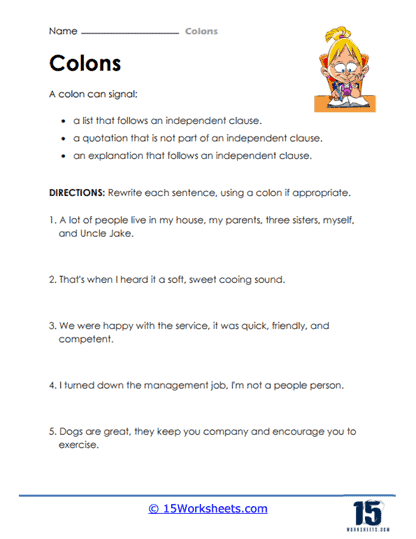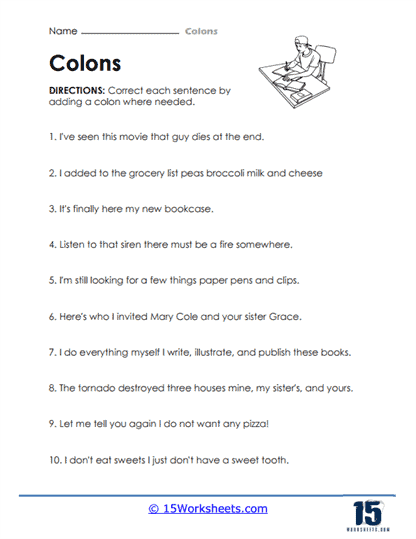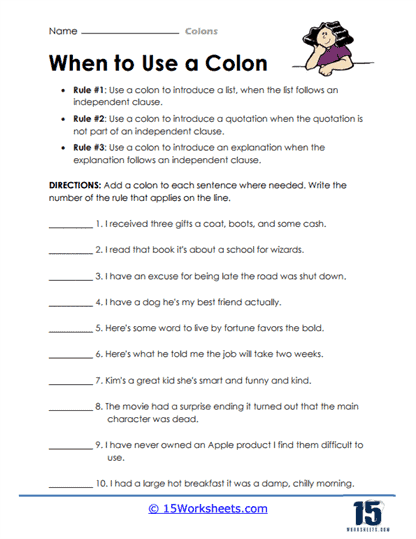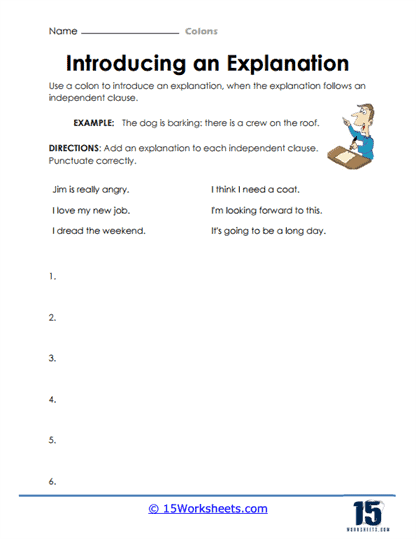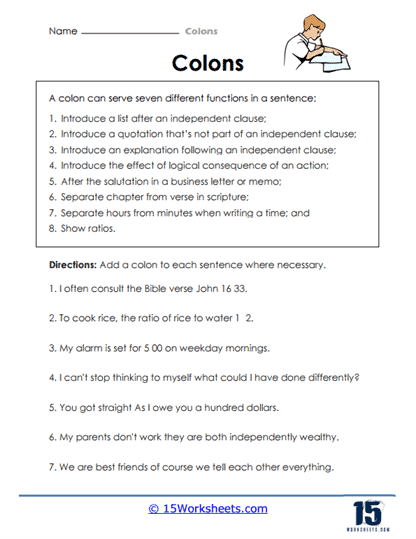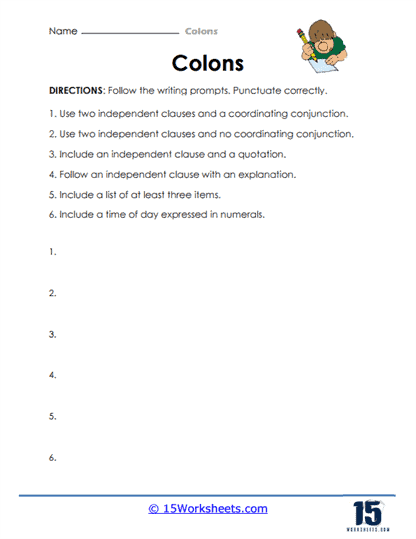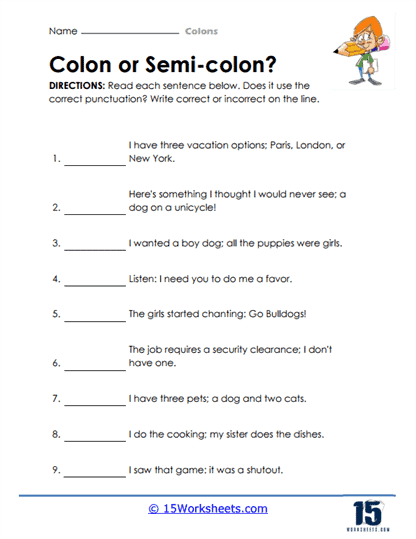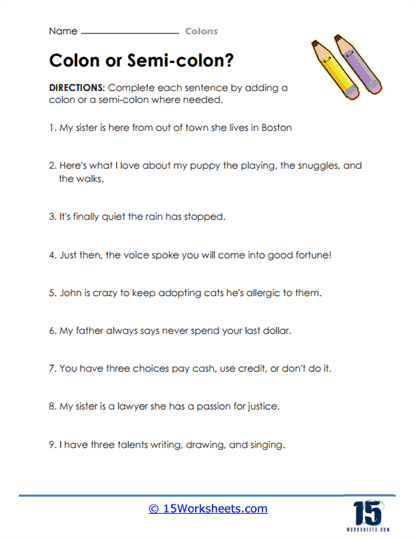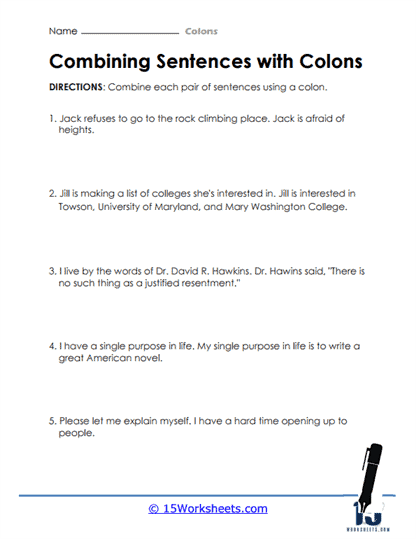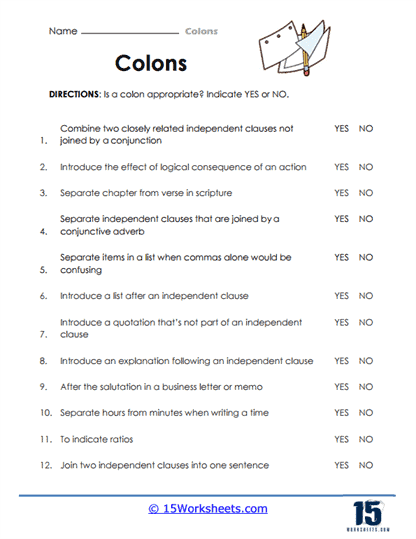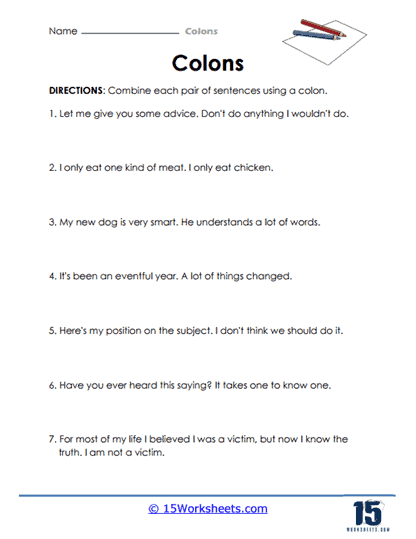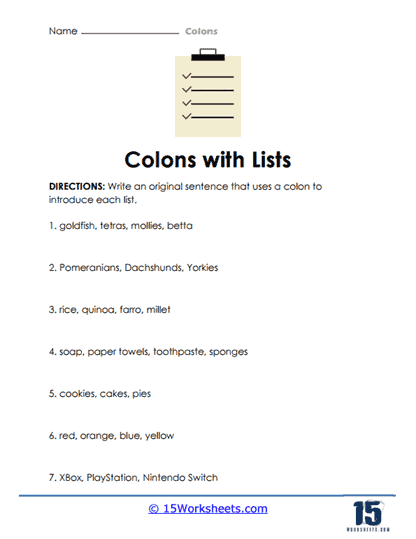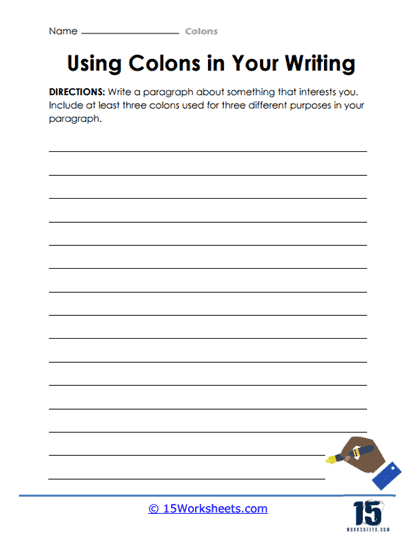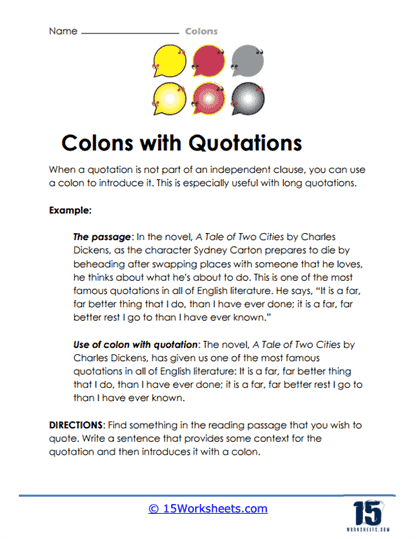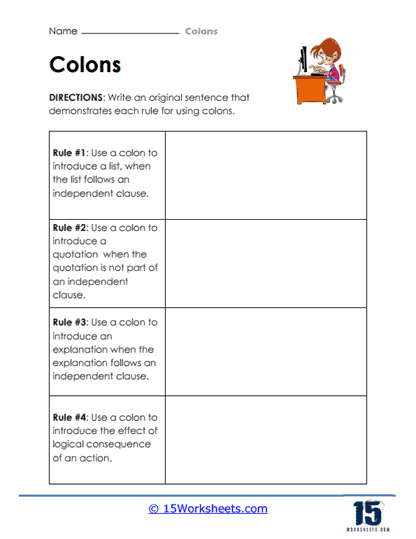Colons Worksheets
All About These 15 Worksheets
This collection of worksheets was created to help students understand and practice the use of colons in writing. A colon is a punctuation mark (:) that has specific functions in sentence structure and can be used in various contexts. These exercises and activities are aimed at developing students’ understanding of when and how to use colons correctly. Here are some common elements found in colons worksheets and the types of exercises that you can expect to work on:
As Introducers
You are given examples and exercises that focus on using colons to introduce lists, explanations, or quotations.
Example – “Please bring the following items to class – a notebook, a pen, and a calculator.”
Time Expressions
These are activities that require students to use colons when expressing time, such as indicating hours and minutes.
Example – “The movie starts at 7:30 p.m.”
Titles and Subtitles
These provide practice in using colons to separate titles from subtitles or to introduce subcategories.
Example – “Harry Potter and the Sorcerer’s Stone – The Beginning of an Epic Journey”
Formal Salutations
Worksheets include exercises focusing on using colons in formal salutations or business letters.
Example – “Dear Mr. Johnson:”
Independent Clauses
You are provided examples and activities that emphasize using colons to connect two independent clauses, where the second clause elaborates or provides further information related to the first clause.
Example – “She had one goal – to win the competition.”
Correcting Colons
In these worksheets you are presented with sentences that include incorrect colon usage, and students are tasked with identifying and correcting the errors.
How To Use Colons in Your Writing
Colons are used in writing to serve specific purposes and provide clarity or emphasis. Here are some situations where it is appropriate to use colons:
Introducing Lists – A colon can be used to introduce a list of items. It signals to the reader that a series of elements follows, helping to organize and present information in a concise manner. For example, “She packed everything she needed for the trip – clothes, toiletries, and a camera.”
Introducing Explanations or Elaborations – Colons can be used to introduce explanations, elaborations, or clarifications that provide more information about a preceding statement. This usage indicates that what follows the colon further develops or illustrates the initial idea. For instance, “He made a promise – to always be there for his friends.”
Introducing Quotations or Speech – Colons can be used to introduce direct quotations or speech. They signal to the reader that what follows the colon is a continuation or an example of what was previously mentioned. For example, “She shouted excitedly – ‘I won the race!'”
Separating Titles and Subtitles – Colons are used to separate titles and subtitles in writing. They indicate a hierarchical relationship between the main title and the more specific subtitle. This format is commonly seen in academic papers, books, or articles. For instance, “The History of Ancient Rome – From Republic to Empire.”
Expressing Time – Colons can be used to indicate time, particularly when separating hours from minutes in time expressions. This usage is often seen in schedules, timetables, or other time-related information. For example, “The concert starts at 7:30 p.m.”
It is important to note that colons should be used judiciously and in accordance with the specific style guide or writing conventions being followed. They are meant to provide clarity and structure to the writing. It is recommended to avoid overusing colons and to use them when they truly enhance the readability and meaning of the sentence or passage.

